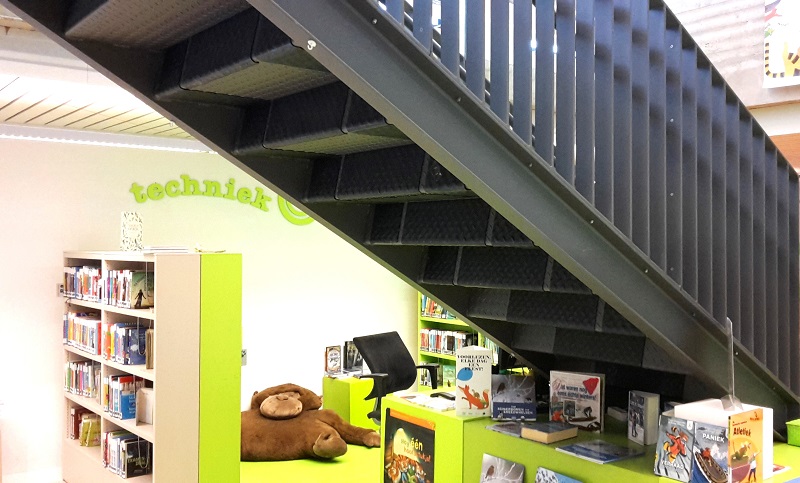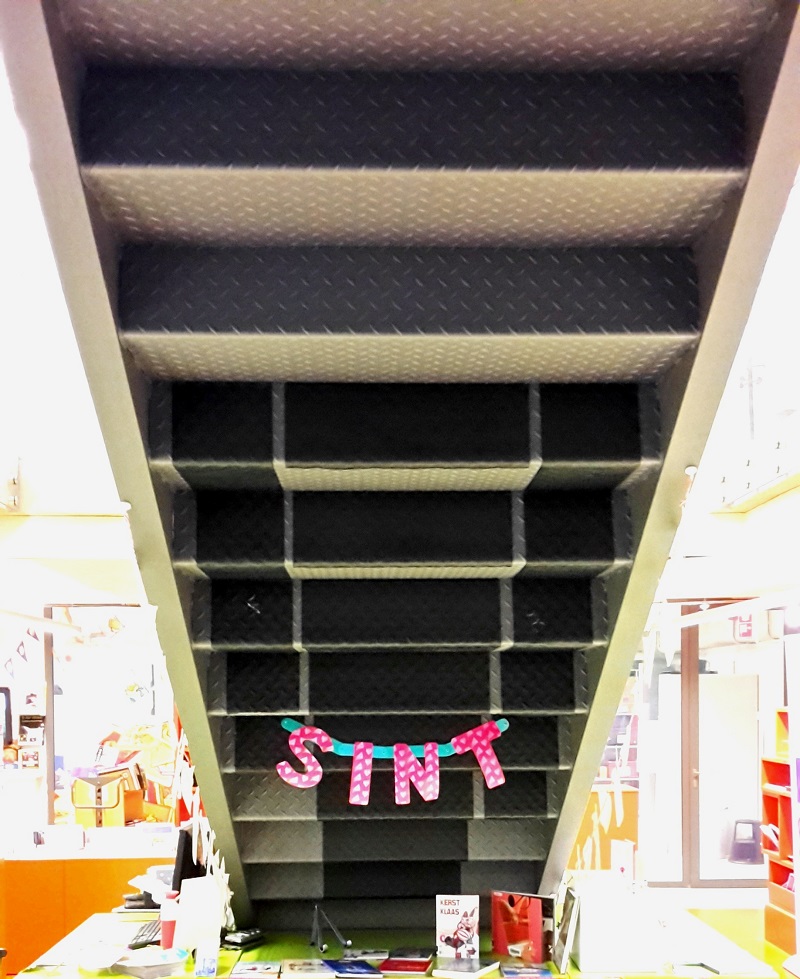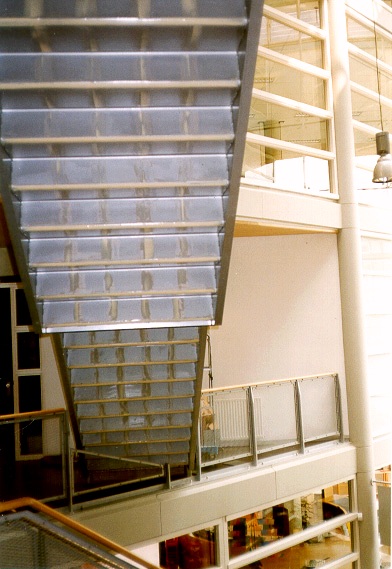The problem
A steel staircase can cause quite some noise nuisance in and around buildings Walking on steel stairs, which are common in the non-residential construction sector and public buildings Het belopen van de stalen trap, radiates a lot of noise. The type of sound problem caused by steel stairs is called contact noise. Contact noise is created when matter vibrates, and thus radiates sound.
Different steps
There are two different types of stairs, straight and spiral staircases, both having different types of steps. The insulation methods that we will mention below are meant for even steps without perforation. Steps with a diamond plate pattern are also included in the category of even steps, and thus can be insulated. Or maybe anti-drumming is a better term than insulation in light of the following methods. Steps with round holes contain a (significantly) smaller amount of surface to attach the insulation material to. If you still want to insulate perforated steps, we recommend you to experiment with one step before treating the whole staircase.
Insulating steel steps
There are two methods for insulating steel steps. These insulation methods are called anti-drumming methods. Anti-drumming products ensure that the gong sound from the steps is significantly reduced.
Method 1 
The first method is the easiest and can be carried out using the bitumen ground plate Vibraflex UF. Vibraflex is a self-adhesive ground plate that is available in various weight classes: 3, 5, 8, 10 and 12 kilogram per squared metre. As for the anti-drumming of closed steel steps, the Vibraflex UF80 and UF100 variants (8 and 10kg/m² respectively) are most often used. The right type of Vibraflex is determined by the thickness of the substrate. UF80 for steel with a thickness up to 3 mm and Vibraflex UF100 for everything above 3 mm.
The procedure is relatively simple. First, you need to thoroughly clean and degrease the substrate. Vibraflex can be cut most easily when the product is cold. In this condition, the bitumen is a bit harder, which facilitates the cutting process. Once you cut the pates to size, you can warm them up to a temperature well above room temperature, for example using a hairdryer. Cold plates easily break and adhere less well. Preheated plates are more flexible and have an 'activated' self-adhesive layer. Prevent air bubbles by firmly pressing the parts of Vibraflex.
Vibraflex has a EN-13501 fire certification class E, which can be important for applications in public buildings. Since in most cases we are talking about a surface of just a few squared metres in total, this shouldn't form an issue. Finishing with flame retardant plasterboard can also be a solution, in which case the Vibraflex material is covered right away. If you doubt, contact the local fire department. If necessary, we are happy to send you a product sample and documentation.
Method 2
The second method takes more effort, but offers (in many cases) a beter end result. In this method, insulating the steel steps is carried out according to the sandwich anti-drumming principle. The materials used for this method consist of a combination of Vibradamp A-90-P, two component paste and Zincor steel panels. Sandwich anti-drumming is usually applied where anti-drumming by means of bitumen, like with Vibraflex UF, is undesirable. Vibradamp should be applied on steel thicknesses of 4 mm and higher. 
The procedure is as follows. Thoroughly clean and degrease the substrate! Make sure that the A- and B-component are at room temperature (blending the paste when it has a temperature under 15 degrees is hardly possible). Then, you add the B- component from the bottle to the bucket with the A-component and mix until the substance has an even beige colour. The paste should be applied in a ratio of 4:1:1. This means that on a steel substrate with a thickness of 4mm you apply 1,5mm pasta and 1,5mm Zincor plates.
After applying Vibradamp you press the Zincor plates in to the paste. The space between each Zincor plate should be around 10 mm. Ideally, fashion the plates in a brick lay format, i.e. staggered.
The end result will be noticeable after about a few days. The drying time of the Vibradamp paste underneath the galvanised steel plates takes longer than if the steel plates wouldn't be applied. After the hardening process is completed, the whole thing is paintable with wet varnish. All product details of Vibradamp, can be found on its product page.
Questions? 
Do you have any questions concerning this topic? Please feel free to contact us. Unfortunately, there are no product samples of Vibradamp.

 Sound Absorption
Sound Absorption  Sound Insulation
Sound Insulation  Vibration Isolation
Vibration Isolation  Silent Ventilation
Silent Ventilation  Accessories
Accessories  Thermal & Acoustic Insulation
Thermal & Acoustic Insulation